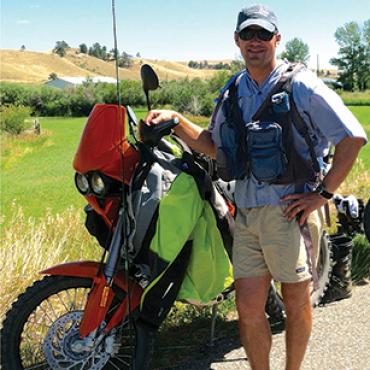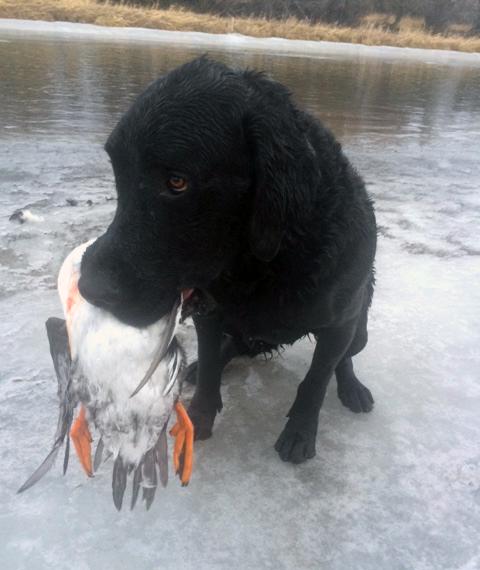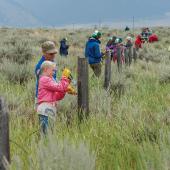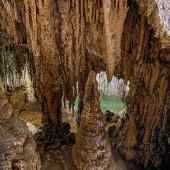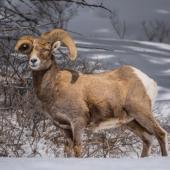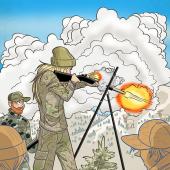Winter Waterfowl
Fowl Weather n. Local duck and goose hunting opportunities that can create memorable times afield and delectable gastronomic experiences throughout the winter months.
The idea of waterfowling as prime winter recreation begins with the season, which begins October 1st and continues into mid-January, depending upon the specific region hunted (Montana is home to both the Central and Pacific Fly-Ways). It also doesn’t hurt that some of the best hunting opportunities occur in the worst of weather. At its most rudimentary level, duck and goose hunting is a good excuse to get outdoors, enjoy some fine sport, and maybe bring home something more exotic for your holiday dinner table than a Butterball turkey.
There are just about as many approaches to waterfowling as there are hunters. What is appealing about this is that any person equipped with a shotgun–preferably a .12 gauge–some non-toxic shot (steel, bismuth, tungsten, and the like), and a state and federal migratory bird hunting and conservation stamp can venture out to a nearby riparian area and maybe bag a bird or two simply by “jump-shooting” some ducks and geese. Better yet, if you never manage to bring home some meat for the skillet, you can still achieve a feeling of satisfaction in knowing that by going waterfowling you have made a contribution to conservation, as 98% of the proceeds from the sale of your duck stamp goes directly into a fund to purchase or lease wetland habitat.
The popular pastime of attempting to shoot ducks and geese as they engage in daily migrations between feeding and resting areas inches the bar of interest up a tier. Known as “pass shooting,” this form of waterfowl hunting requires an intimate knowledge of the birds’ daily habits as well as a heightened level of shooting proficiency. This aspect of the sport likewise entails a more elaborate approach to camouflage, involving the building of blinds—a critical component of the sport at its more consuming levels that can be fashioned within a patch of cattails along a river or lake, deep inside an irrigation ditch, or in a coffin-like hole dug in a farm field.
No discussion of waterfowling would be complete without mentioning the dogs commonplace to its pursuit. For the dyed-in-the-wool waterfowler, dogs are often the sine qua non of the sport: invaluable companions with the principal role of retrieving game in all conditions while providing a friend to talk to and warm up with in a lonely blind. Favorite breeds are the ubiquitous Labrador, the stout-hearted but often irascible Chesapeake Bay retriever, and even the occasional Golden. I’ve also heard of hunters occasionally jump-shooting ducks with the assistance of their beloved German Shorthair, or any other dog game enough to bring them their quarry.
For those new to the sport, waterfowling with the benefit of blinds, decoys, calls, trained retrievers and the like is generally uncharted territory and can be more than a bit intimidating. Therefore, the best way for the uninitiated to experience this unique sporting phenomenon is to become friends with a seasoned waterfowler. An invitation to accompany such an individual is an honor, and will make you privy to a hunting tradition spanning continents and centuries. Who knows? Maybe one day it will be you extending the invitation.
Local Waterfowling Hotspots
The Madison River
Try wading around near the Grey Cliffs access or take a float downstream for a “cast and blast” adventure. Make sure you’re familiar with hunting regulations and property lines, and look for state land in which to hunt along the river to avoid trespass.
Lower Yellowstone River
Again, try a cast and blast outing in the vicinity of Big Timber late in the season. Be aware of river conditions (ice jams and the like); and, as with hunting along the Madison and all other rivers, have an accurate map along and be careful not to trespass.
Ennis Lake
Not far away and a good place to find both ducks and geese. Take a canoe or some other worthy craft, throw out some decoys, and conceal yourself in the cattails.
Block Management Hunting along the Musselshell
Late in the season, waterfowl in this area can number in the thousands. There is excellent access through Montana’s Block Management program and opportunities for jump- and pass-shooting. Well worth the relatively short two-hour trip.
Red Rock Lakes National Wildlife Refuge
Situated in the beautiful Centennial Valley, Red Rock can provide superb waterfowling. Why not bring some camping gear and plan on spending the night? Incidentally, there are a host of National Wildlife Refuges scattered throughout the state; and almost all provide fine hunting opportunities for a variety of game.
Other Late-Season Hunting Opportunities
Haven’t managed to fill your freezer yet? Don’t resign yourself to begging from your friends just yet. Opportunities abound to venture afield in pursuit of a variety of game well beyond the end of general big-game season on November 27. The best way to take advantage of these late-season hunts is to study what’s available and apply for permits with FWP well before the season commences. But, if you’re late to the party, there are still options.
Crop Damage Control Hunts
Throughout central and eastern Montana, if target population numbers are not met by the end of the regular season and a severe winter ensues, crop damage hunts are often initiated for both whitetail and mule deer. These hunts typically occur in December and January, and hunters may purchase tags from regional FWP offices offering the hunts. In some areas, multiple tags are offered (no bucks).
Upland Birds
Over the past several years, the upland bird season in Montana (excepting Sage Grouse) has closed on December 15th. This year, the season has been extended until January 1st for partridge, sharptail grouse, and pheasants (sage and mountain grouse season still ends December 15th). Don’t forget that you can still purchase a fall turkey license in many regions throughout the state, the season not closing until January 1st. Hunting wild turkey is somewhat akin to stalking big game, and there is nothing like having your own turkey on the Thanksgiving Day table.

